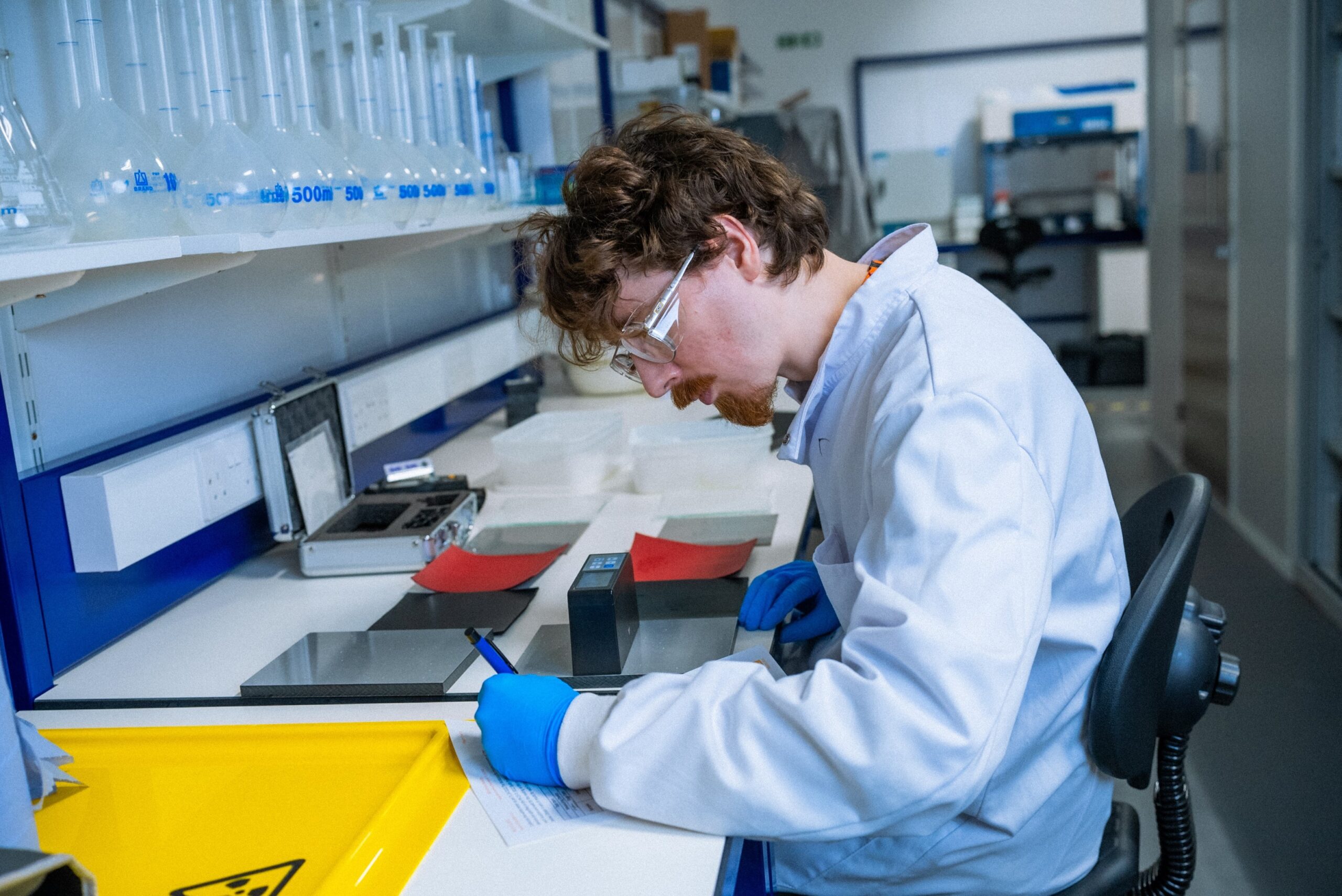Material Compatibility Corrosion Testing: Everything You Need to Know
Article Summary
Corrosion of metals can cause financial losses and health and safety issues when equipment or facilities are damaged to the point of failure. Simply put, corrosion testing investigates the compatibility of a material against a solution. Device manufacturers may use it to develop appropriate instructions for use for their product, and disinfectant manufacturers may use it to show that their solution is compatible with common healthcare materials.Article Contents
What is Corrosion?
Corrosion is a natural process that occurs on metal surfaces where the metal reacts with the environment causing gradual deterioration. Oxidation reactions occur at the metal surface in the air or in water, which leads to the formation of a more stable oxide of the metal. For example, rusting is a very common type of corrosion which occurs when iron is exposed to oxygen and moisture over a long period of time, leading to the formation of iron oxides.
What are common types of corrosion?
- General attack corrosion is when oxidation occurs on the entire surface of the metal. This type of corrosion can lead to deterioration to the point of failure, however because it is a predictable phenomenon, it is possible to plan and manage this type of corrosive attack.
- Localised corrosion only occurs at specific areas of the metal surface and can be of multiple types:
- Pitting corrosion is a very aggressive and unpredictable type that leads to holes/cavities that penetrate down from the material surface, causing the material structure to fail.
- Crevice corrosion occurs in conditions where there is a restriction of oxygen (e.g. under washers and at bolt heads), so is often in areas that are not visible.
- Galvanic corrosion occurs between two different metals that are in physical or electrical contact and exposed to a common electrolyte (e.g. condensation, rainwater, seawater). The molecules of one metal’s surface become attracted to the other leading to corrosion of only one of the two metals. The galvanic series is used to determine which metal will corrode faster.

How is corrosion testing done?
The EU Regulation 2017/745 (MDR) emphasises the importance of safety and performance of medical devices and what’s required to reduce risk as far as possible and prevent device failures. Part of this includes compatibility testing and ensuring manufacturers choose the appropriate materials for their device’s intended use, optimising functionality, efficiency, lifetime, and reliability of that device.
Corrosion of metals can become a big financial burden/loss when it causes damage to the point of failure, and in particular for metals used in the medical device industry it can be detrimental to health and safety of users and patients.
Testing the metal is a good way to generate data to show that your device is safe to use and compatible with chemicals it will be exposed to. In the same way, disinfectant manufacturers can also test their formulations and chemical actives against metals to determine whether their disinfectants can be safely used on those materials in the real world.
The ASTM Standard Practice for Laboratory Immersion Corrosion Testing of Metals (G31-21) provides guidance on standardised method for measuring the mass loss of metals while immersed in solution, which is then used to obtain corrosion rate data for those metals. Corrosion products on the metal samples that have accumulated during the period of immersion are removed through a cleaning process before being weighed.
The test method in the G31-21 standard includes factors to consider such as sample preparation, test conditions and methods of cleaning samples. It also provides the mathematical equation to calculate the corrosion rate using the surface area, mass, and a constant to be applied depending on what units of corrosion rate is required.
Corrosion testing case study
On a study, testing a solution to be used as a disinfectant, Test Labs completed a corrosion test against 4 different types of metal. The metals chosen were 304-grade stainless steel, 316-grade stainless steel, 416-grade stainless steel, and 1050-grade aluminium. These metals are used in a variety of applications, including in healthcare.
The testing set-up and methodology followed the guidance and principles of ASTM G31-21, where samples of each metal were prepared at specific dimensions and immersed in the disinfectant solution for a period of 10-days. The solution was maintained at a temperature of 30 (±1) °C using a reflux condenser, as this would be the maximum storage temperature of the solution.
The study was a good way to observe how different metals react differently, and some show more resistance to corrosion than others. In this way, manufacturer’s can determine the best type to use for their medical devices or determine what surfaces and devices their chemicals can be used one.
How can Test Labs help?
The importance of performing material compatibility testing is clear in how it ensures safe use of the device in real world, especially in relation to healthcare where failures and damage to medical devices could potentially lead to fatal consequences. With an extensive list of material compatibility tests developed in house, Test Labs can support medical device manufacturers in validating their IFU and confirming compatibility claims. An example of a Test Labs conducted material compatibility case study can be found here.
Accelerate your access to global markets.
Contact us about your testing requirements, we aim to respond the same day.
Get resources & industry updates direct to your inbox
We’ll email you 1-2 times a week at the maximum and never share your information


